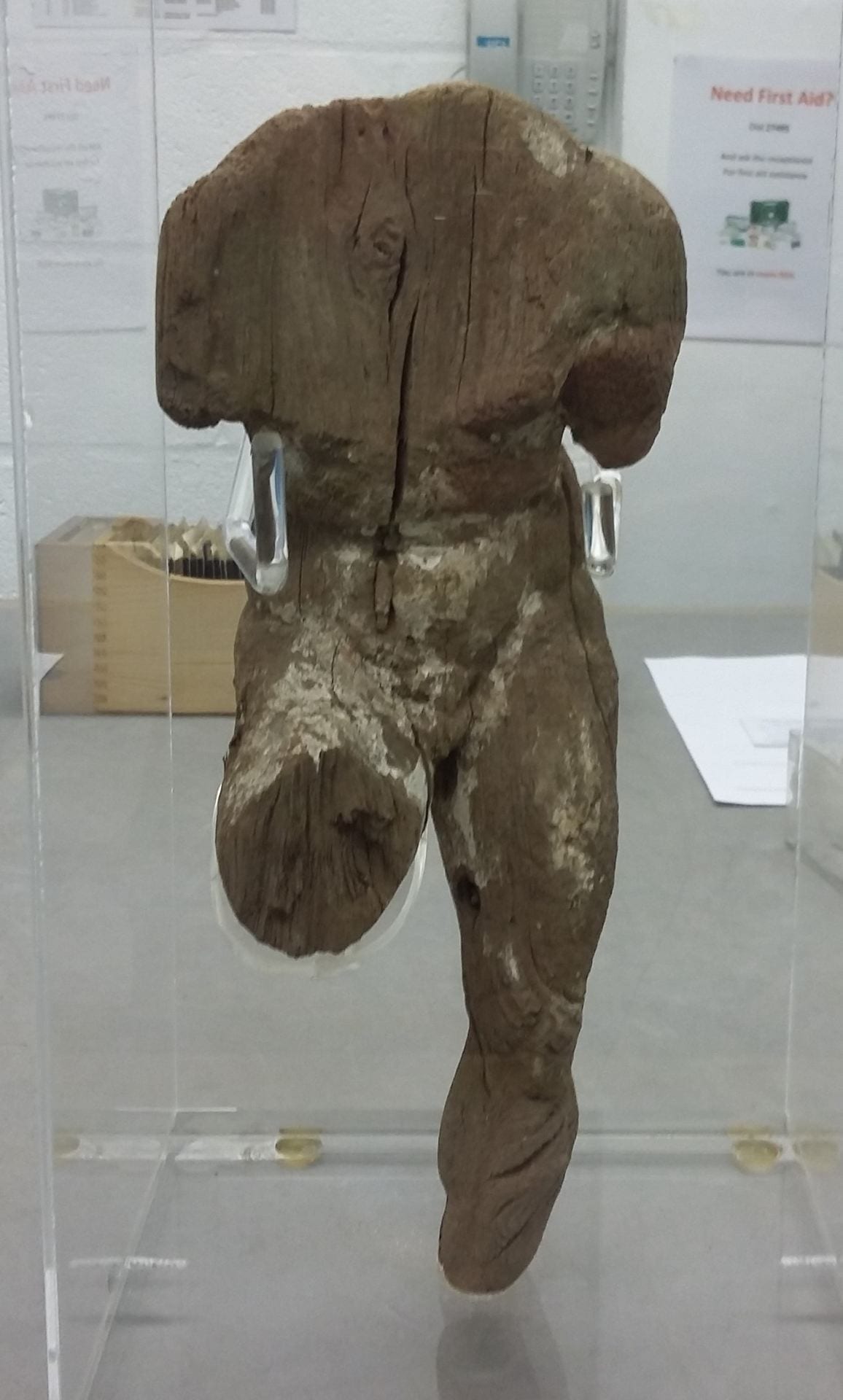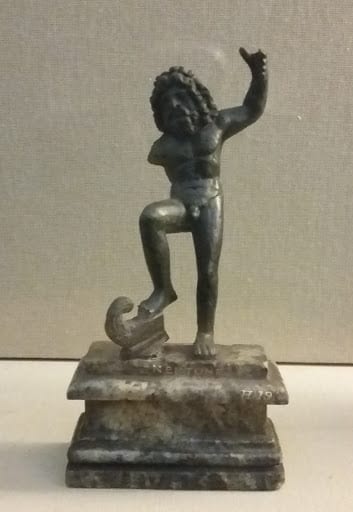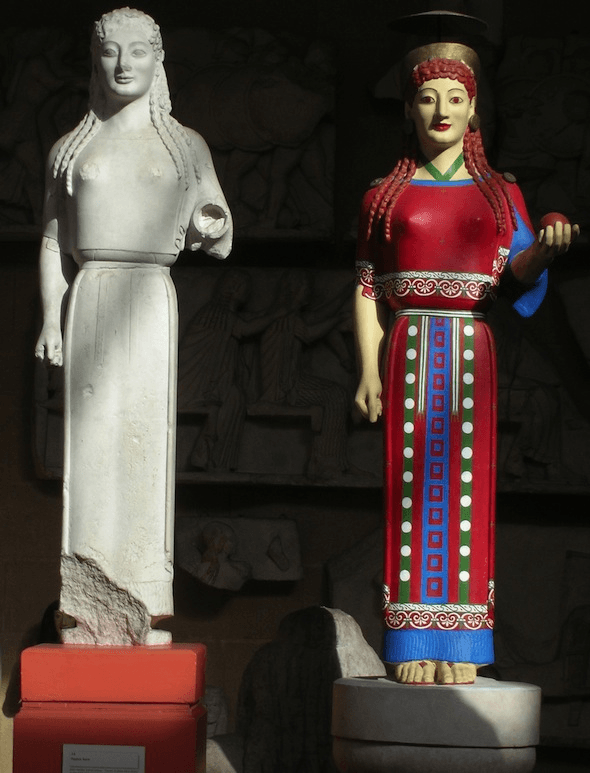[Last modified: March, 25 2019 12:17 AM]

About the Object
The object is around 2000 years old, and was found in Fayum, a region around and the banks of the Nile, in Egypt, renowned for its fertile soil. This made it a hive of activity throughout history and now it is a place of great archaeological wealth. The statue dates to the Graeco-Roman period, when the two empires (at different times) occupied the area. The statue is very typical of Greek and Roman artistic styles.
It was possibly placed in a tomb, as small statuettes such as this were often placed alongside the body of the deceased to reflect the qualities that that person had in life. It may also have been a votive offering at the shrine of a god, in this case Poseidon, similar to the statue in the image below, the god it is believed to once have represented. The statue would have been painted brightly, and some traces of the pigment can still be seen on the body of the statue.
< Image courtesy of UCL Archaeology Collection taken by Lawrence Wilson
|
Object name |
Graeco-Roman statue of Poseidon |
|
Collection |
UCL Archaeology |
|
Material |
Wood |
|
Origin |
Fayum, Egypt |
|
Catalogue number |
UCL 1406 |
|
Dimensions |
270 mm x 99 mm x 58.7 mm |
How Was It Protected?
This statuette, only a foot high, is a lot more significant than it may seem. It appears to be in poor condition, with the head and parts of the limbs missing, and only a few specks of paint remaining. In truth, this is not the case. The wood it is made from has survived for millenia without crumbling into dust, making an artefact like this exceptionally rare. Very few examples of other wooden artefacts like it have survived, as wood is so susceptible to degradation from moisture.
The wood has become entirely dried out, or desiccated, in turn preserving it. This prevents bacteria from living in the material and causing it to rot. The sealed and dry environment of the tomb may then have led to this. Falling rubble may also have covered it, protecting it from the elements, and perhaps also causing the damage we now see.
Courtesy of the British Museum >
Image taken by Lawrence Wilson


Why Is This Protection Important?
Without these chance occurrences leading to the preservation of this statue, it would not be available for us to study and admire today. With this in mind, it is important for us to consider our own, present-day artefacts, and what we intend to preserve so future generations, perhaps in hundreds of years to come, can also learn.
Furthermore, objects like this remind us that history is not always as we imagine it. It was only recently discovered that ancient statues were painted bright colours, and were not the pure white marble we imagine. Likewise, we remember these marble statues as their durable material preserves them, but there is a host of ‘lost’ material culture; the artefacts that didn’t survive that could hold secrets about history. This statue is a reminder of this.
< Courtesy of University of Cambridge
Museum of Classical Archaeology
Want to Know More?
There’s still lots more to find out; about Gayer-Anderson, the eccentric collector of this object who famously collected the Gayer-Anderson cat, now housed in the British Museum; the Roman and Greek Empires in Greece; or Poseidon and ancient Graeco-Roman religion. Use the links below to discover more.
Further Reading
Gayer-Anderson: The Life and Afterlife of the Irish Pasha by Louise Foxcroft.
Ancient Greece, Rome and Egypt
Ancient Greek and Roman Religion
Recommended Next:
